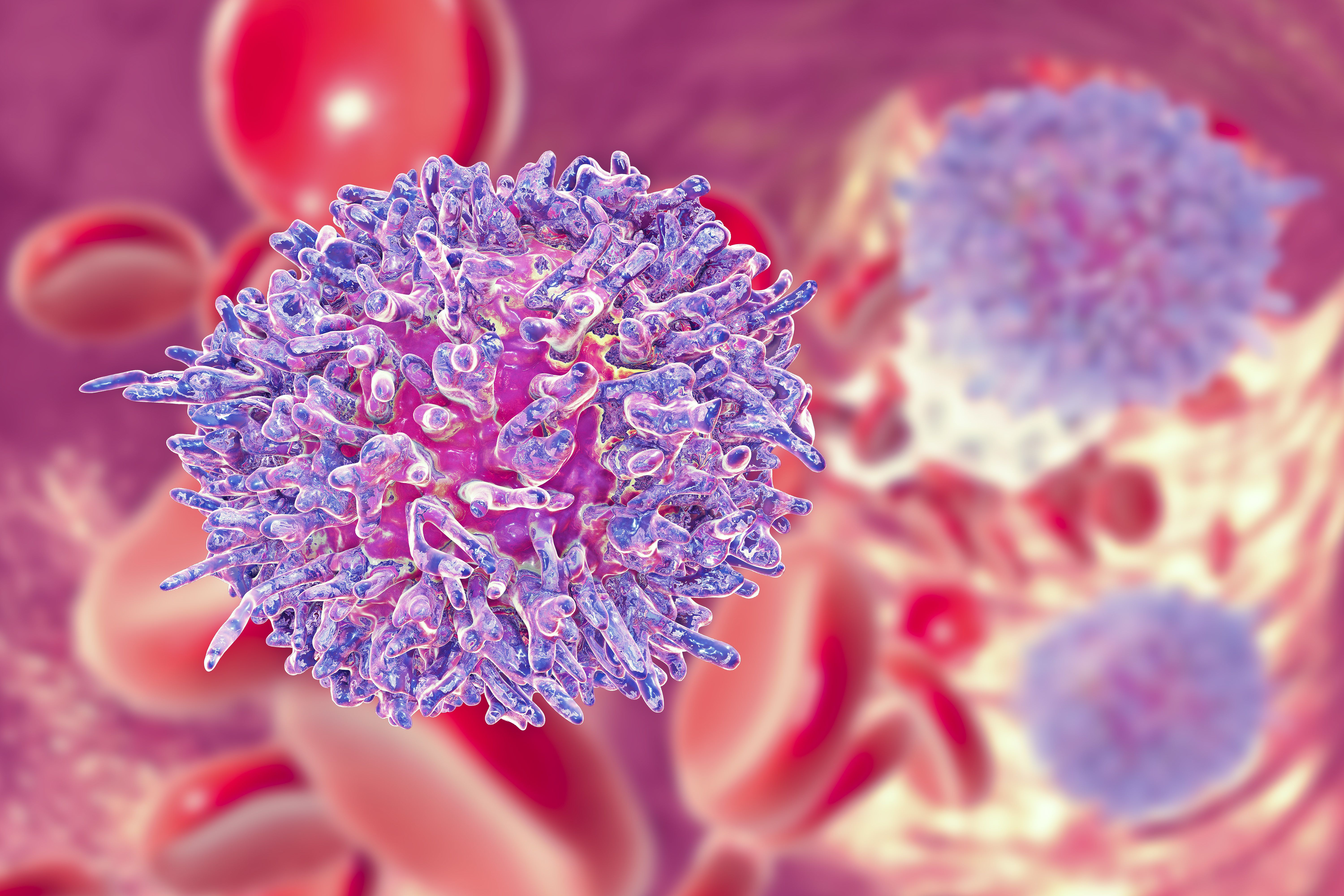Over 50% of Patients With R/R Acute Leukemias Respond to SNDX-5613 in AUGMENT-101
Updated data from the phase 1/2 AUGMENT trial led to a 30% complete remission rate and an overall response rate of 53% with SNDX-5613 when used in patients with relapsed/refractory acute leukemias.

The phase 1 portion of the ongoing phase 1/2 AUGMENT-101 trial (NCT04065399) of SNDX-5613 (revumenib) elicits clinical activity and durable remissions in patients with mixed lineage leukemia rearranged (MLLr; KMT2A) and NPM1c-mutant relapsed/refractory acute leukemias, according to Syndax Pharmaceuticals, Inc.1
Updated data led to a 30% complete remission rate and an overall response rate (ORR) of 53%. The median duration of complete remission response was 9.1 months.
Among the 12 patients who underwent stem cell transplant after achieving a response with SNDX-5613, 9 remained in remission, with 4 continuing beyond 1 year. No patients discontinued treatment as a result of treatment-related adverse events (TRAEs).
"These data continue to showcase [SNDX-5613] potential as a best-in-class treatment option for patients with mNPM1 or MLLr acute leukemia. We are highly encouraged by the updated data including the percentage of patients achieving a CR/CRh, which improved to 30%," said Michael A. Metzger, chief executive officer of Syndax Pharmaceuticals, Inc, in the press release. "We expect to report top-line data for at least one of the cohorts from the pivotal phase 2 portion of the AUGMENT-101 trial beginning in the third quarter of 2023, followed by an expected new drug application filing by the end of 2023. In addition to the R/R setting, we are committed to unlocking the full potential of [SNDX-5613] by testing combinations to enable the expansion into newly diagnosed and maintenance settings in mNPM1 and MLLr acute leukemias, as well as into colorectal cancer, our first assessment of [SNDX-5613[] in solid tumors."
SNDX-5613 is a potent, selective, small molecule Menin inhibitor currently being developed for the treatment of MLLr acute leukemias, including acute lymphoblastic leukemia (ALL) and acute myeloid leukemia (AML), and NPM1 mutant AML.
In preclinical studies, treatment with SNDX-5613 led to an event-free survival of over a year and 7 out of 8 models benefitted from a single treatment of the agent. The agent also received an orphan drug designation from the FDA for the treatment of adult and pediatric patients with AML.
The open-label, dose-escalation and dose-expansion, phase 1/2 AUGMENT-101 trial is evaluating the use of SNDX-5613 in patients with acute leukemia.2
In the phase 1 dose-escalation portion of the trial, investigators sought to determine the maximum tolerated dose and recommended phase 2 dose of SNDX-5613. Patients were separated into 2 cohorts based on concomitant treatment with a strong CYP3A4 inhibitor. Patients enrolled in A were not receiving a strong CYP3A4 inhibitor, while those in Arm B were receiving a strong CYP3A4 inhibitor.
In phase 2, the dose-expansion portion of the trial, a total of 64 adult and up to 10 pediatric patients will be enrolled in 3 indication-specific expansion cohorts comprised of patients with MLLr acute lymphoblastic leukemia or mixed phenotype acute leukemia in cohort 2A, MLLr AML in cohort 2B, and with NPM1c-mutant AML in cohort 2C. Here, investigators will evaluate the efficacy, short- and long-term safety, and tolerability of the agent.
The primary end points for phase 1 include dose-limiting toxicities and the frequency, duration, and severity of TRAEs, and pharmacokinetics (PK). In phase 2, the primary end points are complete remission rate and frequency and severity of AEs with the secondary end points of relapse-free survival, time to relapse, duration of response, overall survival, and PK.
Findings of the trial showed that across evaluable patients with mNPM1 (n = 14) or MLLr (n = 46) acute leukemia who received SNDX-5613, 12 (20%) patients proceeded to stem cell transplant. Ten of the 12 patients (83%) were minimal residual disease-negative, 9 of the 12 patients (75%) received a stem cell transplant and remained in remission as of the data cutoff date at a median follow-up of 12.3 months, and 4 patients experienced remission for longer than 1 year.
Additionally, 3 patients were treated with SNDX-5613 maintenance following stem cell transplant or non-myeloablative stem cell boost, 2 (67%) of whom remained in remission at the time of the data cutoff date for over 1 year.
Regarding safety, SNDX-5613 was well-tolerated with no new safety signals identified, including in patients who proceeded to stem cell transplant. Asymptomatic grade 3 QT prolongation was the only dose-limiting toxicity observed in the trial and no ventricular arrhythmias or other clinical sequelae related to QTc prolongation were observed. Differentiation syndrome was reported in patients, all grade 2, and were managed with standard therapies.
Updated data from this portion of the trial will be presented at the 64th American Society of Hematology Annual Meeting on Saturday, December 10, 2022.
REFERENCES:
Syndax announces positive updates to clinical activity and durable remissions in phase 1 portion of AUGMENT-101 trial of revumenib in patients with acute leukemias. News release. Syndax Pharmaceuticals, Inc. November 3, 2022. Accessed November 4, 2022. https://prn.to/3fAM14E
A study of SNDX-5613 in R/R leukemias including those with an MLLr/KMT2A gene rearrangement or NPM1 mutation (AUGMENT-101). ClinicalTrials.gov. Updated August 1, 2022. Accessed November 4, 2022. https://clinicaltrials.gov/ct2/show/NCT04065399
First Dose of CD38-Targeting CAR T-Cell Therapy Administered in AML
January 22nd 2025The first patient with relapsed/refractory acute myeloid leukemia has received KJ-C2320, an allogeneic CAR T-cell therapy targeting CD38 and developed using the THANK-uCAR platform, in an investigator-initiated trial in China.
Read More